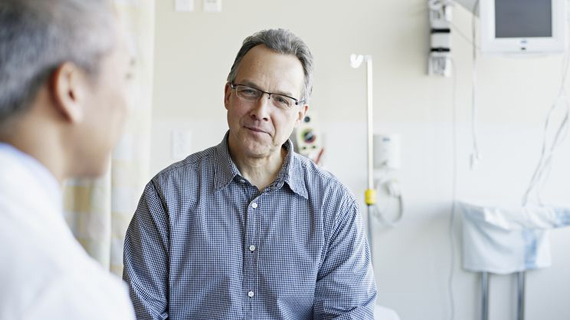Οζονοθεραπεία
Ozone Therapy as a possible supportive treatment in the treatment of Cancer.
In June 1995, the US National Institute of Health (NIH Bethesda, MD) of USA included the use of oxidative agents (ozone, hydrogen peroxide) in class 5, (amongst) metabolic therapies, cell therapy and antioxidant agents.
Therefore it is worth discussing the issue of the unusual biological features of the tissue environment of a cancer.
Tumor hypoxia is a well-recognized mechanism for the tolerance of neoplastic cells to anticancer drugs and radiotherapy . The work of nobel laureate Warburg in the 1920s proved since then that even in hypoxia , cancer cells convert glucose into lactic acid. So the cancer cells can survive in hypoxia.
Both initial (clonogenus) and metastatic tumors flourish in areas where the average pO2 is lower than normal tissues.
There is a general consensus that neoplastic tissues prefer a hypoxic and acidic environment.
An immediate correction of the hypoxic state therefore seems a simple method to prevent the progression of cancer, and a new approach may be proposed for the recovery of normoxia in hypoxic tissues.
During the last century several strategies have been proposed to improve the oxygenation of tumors . The simplest was the inhalation of pure oxygen, but due to its toxicity , this can be applied in short periods with only a transient increase in arterial PO2.
Hyperbaric oxygen therapy is a good suggestion but difficult to implement because it needs special therapeutic centers.
Is it then possible to steadily improve the distribution of oxygen in the tumor environment with ozone therapy? On the basis of clinical improvement of patients with chronic ischemia of the extremities after only two months of treatment, it is likely that three to four months of treatment will bring a normal oxygenation of neoplastic tissues. After the application of millions of ozone therapies during the last four decades we can assure that ozone therapy does not bring side effects but in fact improves the quality of life in the majority of patients.
Also, in addition to the normalization of hypoxia , ozone therapy can manifest other interesting biological effects that may improve the therapeutic effect:
- Possible improvement of blood circulation and distribution of oxygen in ischemic and neoplastic tissues , thus improving the (therapeutic effect) of chemotherapy – radiotherapy. Ozone therapy can also reduce their typical side effects and lead to better (tissue) tolerance.
- Improvement of general metabolism.
- Correction of oxidative stress time by regulating the antioxidant system.
- Activation of the immune system and
- Causing a state of euphoria in patients by activating the neuroendocrine system.
- Through a butterfly G-19, we collect no more than 250ml of blood in 500ml of glass vial, under vacuum, having previously added sodium citrate, 3.8% in the usual 1:9 ratio (citric:blood), Mild mixing during blood collection.
- Then inject 250ml of medical ozone gas (o2+o3) into the vial. The ozone concentration is gradually increased from 20 to 90mcg/ml of gas per ml of blood, in increments of 5mcg/ml for each session. The maximum concentration is reached after 15 sessions at the end of the fifth week. We can do as much as three sessions a week.
- The vial rotates (to prevent the formation of foam (and) damage to the erythrocyte) slowly for about 10min to ensure complete oxygenation and ozonation of the blood.
- Using the ideal blood infusion device (with a filter), pre-filled with serum, ozonated- blood is injected into the donor between 15-20min, always using the same venous access. The session ends in one hour. Rectal insufflation of medical ozone could be an alternative form of ozone administration - treatments. Patients should receive daily the suggested dose of antioxidants e.g. vit C 2gr per day. (We can’t do major autohemotherapy if there is deficiensy of G-6PD or if there is hyperthyreoidism or hypothyreoidism or real failure)
Bibliography:OZONE a new medical drug, VELIO BOCCI, Medical Doctor, Specialist in Rerpiratory Diseases and Haematology, Emeritus Professor of Physiology at the University of Siena, Italy.
Edited by: Dr. Lazaros Daniilidis M.D,M.H,Ph.D, Member of Hellenic Society for Ozonetherapy.
Υπουργική Απόφαση
ΑΠΟΦΑΣΙΖΟΥΜΕ
Την αποδοχή της υπ’ αριθμ. 21 απόφασης 246ης/25-06-2014 της Ολομέλειας του ΚΕ.Σ.Υ., με θέμα «Σχετικά με τη μέθοδο της οζονοθεραπείας», από τον Υπουργό Υγείας. Η συγκεκριμένη απόφαση αφορά στη ένταξη στην οζονοθεραπεία, η οποία περιλαμβάνεται στο ΦΕΚ 157/Α71991 περί των ιατρικών μεθόδων, των μεθόδων της μικρής και μεγάλης αυτομετάγγισης καθώς και των εγχύσεων όζοντος ενδομυϊκά και ενδοαρθρικά, με το σκεπτικό ότι αποτελούν γνωστές παγκοσμίως μεθόδους που δεν λαμβάνουν χώρα μόνο στις λεμφικές παθήσεις, αλλα προτείνονται και συστήνονται για όλες τις ιατρικές ειδικότητες με καλύτερα αποτελέσματα και χωρίς παρενέργειες στον ασθενή, υπό την προϋπόθεση να είναι γνώστης του αντικειμένου αυτός που ασχολείται σχετικά με την εφαρμογή τους.
Ο ΥΠΟΥΡΓΟΣ
ΜΑΥΡΟΥΔΗΣ ΒΟΡΙΔΗΣ

Why in Personalized Oncology?
With personalization in oncology we are able to revive the patient's hope.
While we do not despise the therapeutic means of conventional oncology, on the contrary, we enrich the treatment....
More

